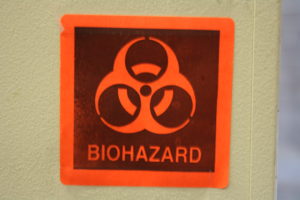 What do “toxic,” “youthquake,” “post-truth,” 🙂 , “vape,” and “selfie” have in common?
What do “toxic,” “youthquake,” “post-truth,” 🙂 , “vape,” and “selfie” have in common?
They’re the most recent selections for the Oxford Word of the Year. Each year the staff members of the Oxford English Dictionary choose the word or expression that they believe most reflects “the ethos, mood, or preoccupations of the passing year, and have lasting potential as a term of cultural significance.”
Interestingly, the 2018 selection, the adjective toxic, is the oldest of the five latest selections as well as all of the 2018 runner ups. Toxic has its roots in the Latin toxicum, meaning “poison” as well as the Greek “toxikon pharmakon.”
In 2018, this “oldie but goodie” word expanded its reach to become an “intoxicating descriptor for the year’s most talked about topics,” according to the Oxford English Dictionary.
Look at the top 10 list of words “toxic” described in 2018, based on the Dictionary’s research:
- Chemical
- Masculinity
- Substance
- Gas
- Environment
- Relationship
- Culture
- Waste
- Algae
- Air
Four of the 10 terms – toxic masculinity, toxic environment, toxic relationship, and toxic culture – can relate to the workplace. Just think about the 2018 global walkouts at Google and the multiple CBS sexual harassment scandals connected to the #MeToo movement.
Toxic workplaces tend to repel and hemorrhage talent at the same time society tolerates and even celebrates “bad boy” leaders, according to Dr. Mark Lipton, professor, executive advisor and author of Mean Men: The Perversion of America’s Self-Made Man.
Well, we can’t expect these bad boy leaders to transform the toxic masculinity culture. But what about other toxic work situations? How do we clean them up before they take an even bigger toll on workers’ health?
There’s no silver bullet – er, magic wand – to fix toxic cultures.
(Old habits die hard, despite my commitment to stop using language that relates to violence or extreme competition, which can contribute to a toxic culture. One of my clients encouraged a number of us to change our vocabulary to change our world, including our organizational culture.)
While words matter, actions that we and others take make a bigger impact on us.
And the systems, programs and processes that organizations adopted over the years when standards and expectations were different have an outsize impact on the toxicity we experience today.
We further compound the toxicity when we don’t provide psychological safety in organizations. As Dr. Amy Edmondson defines the term in her new book, The Fearless Organization: Creating Psychological Safety in the Workplace for Learning, Innovation, and Growth, psychological safety is “a climate in which people are comfortable expressing and being themselves.”
When you have psychological safety at work, you feel confident and comfortable about sharing concerns, admitting you’ve made a mistake, and asking questions, especially “stupid” questions. You don’t worry about being ridiculed, making a career-ending blunder, or experiencing any form of retribution.
And just as importantly, research by Edmondson and others shows that when you feel psychologically safe you “feel free to contribute ideas, share information, and report mistakes.” That’s a healthy culture, hardly toxic.
If you want to support psychological safety to start contributing to a healthy culture, start small in your work group or a work team. First, make sure you make everyone feel welcome – an insider, rather than an outsider.
Also, make sure everyone gets a chance to speak, and preferably freely voice their comments and concerns. Speaking up is harder than it seems for many, especially if the environment sends danger signals. Workplace norms matter more than personality types. (Check out this research study described in the Harvard Business Review article, If Your Employees Aren’t Speaking Up, Blame Company Culture, which reinforces other research.)
You also need to master all the small gestures that make people feel comfortable around you – the eye contact, the nodding of the head, the “thank-you’s,” the check-ins, and on and on. Plus, you need to take these actions consistently and genuinely.
You don’t have to be the team leader to support and build psychological safety. However, you do need to recognize that this is not “check the box” behavior. You—and preferably—others need to do adopt these behaviors as daily habits. That can start influencing the culture.
And even better, these glimmers of hope will inspire you and others to have the curiosity, courage and commitment to start tackling – er, reworking – the systems and processes that contribute to the toxins in your culture.
And maybe in a few years, the Oxford word of the year will be something positive.
We can dream, can’t we? Meanwhile, here’s to a less toxic 2019. And please reach out to me if you want to discuss or get help.

0 Comments